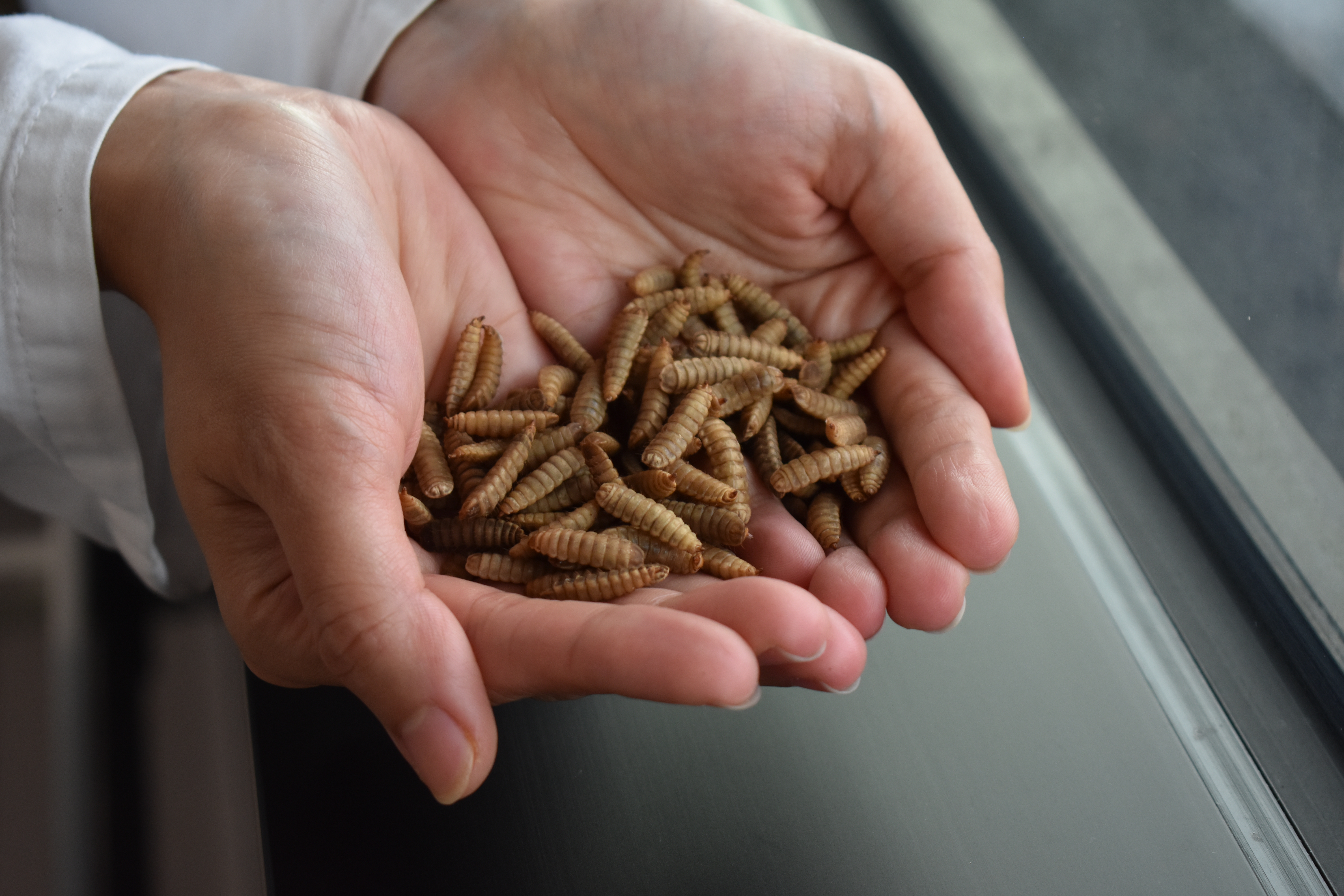
Bioconversion of side streams by insects and their gut microbiome

Dr. Dorothee Tegtmeier:
»Turning trash into treasure: Hermetia illucens microbiome and biodegradation of industrial side streams «
The larvae of the black soldier fly (Hermetia illucens) are a valuable source of protein and have the potential to replace soy and fishmeal in livestock farming and aquaculture. The utilization of industrial side streams plays a central role in the bioeconomy. Side streams could be used as inexpensive feed for rearing the larvae and make insect farming more economical. Therefore, we investigated the effects of empty fruit bunches (EFB) from the oil palm, potato pulp (PP) and cottonseed press cake (CPC) on the development and the larval gut microbiota. The larvae could be reared with EFB, PP and CPC, but were smaller at the end of their development than the control larvae that received chicken feed (CF). However, survival rates of over 90% were observed regardless of the diet.
To analyze the microbial community in the gut of the larvae, we isolated and identified a total of 329 bacterial strains. Members of the Bacillaceae family were most frequently isolated from larvae reared on the high-fiber EFB diet. Bioinformatics tools predicted that a majority of these isolates have the potential to degrade cellulose. Cellulose degradation was subsequently confirmed in vitro using the Congo red test. In contrast, members of the Enterobacteriaceae and Morganellaceae were mainly found in guts of larvae reared on the high-protein CPC and CF diets. We conclude that the gut microbiome plays a crucial role in the digestion of cellulose-rich plant material, thereby enabling the larvae to successfully complete their life cycle even on substrates with low nutritional value.
 Fraunhofer Institute for Molecular Biology and Applied Ecology IME
Fraunhofer Institute for Molecular Biology and Applied Ecology IME